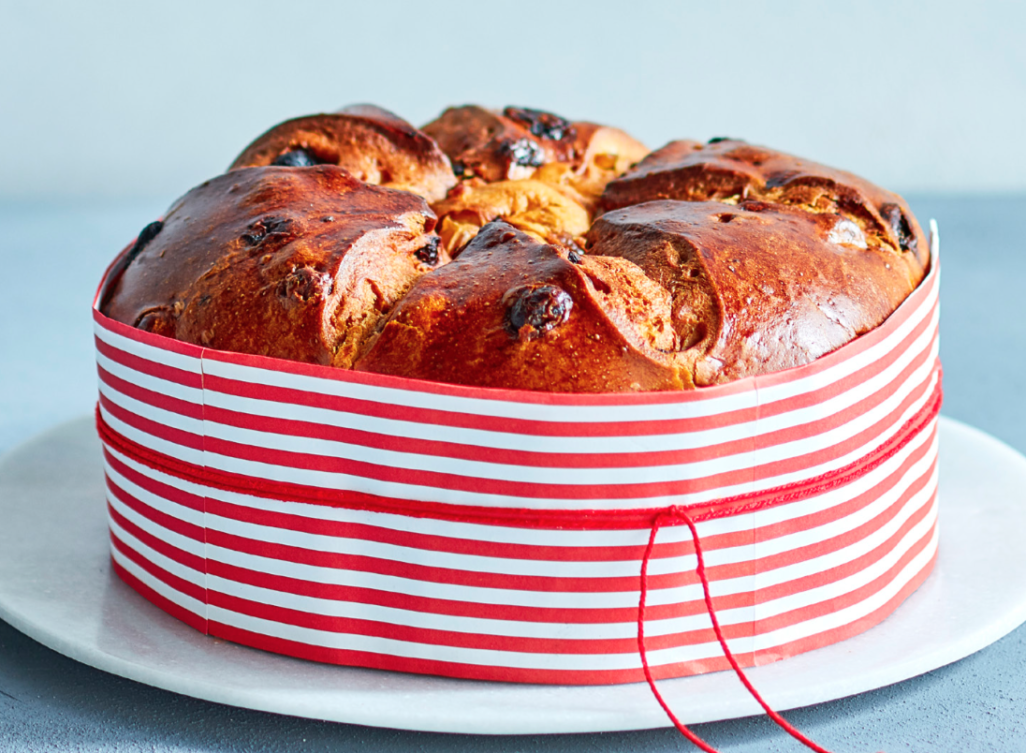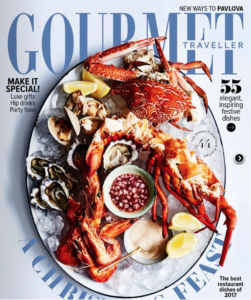
Regift no more! Made right, Italy’s favourite festive bread is a thing of joy.
Andrea Busnelli and his wife, Ilaria, light up when they talk about Gigi. He was born in 1970 at their ornate Pasticceria Busnelli in Milan. He feeds on wheat flour and warm water at 7am, noon and 6pm every day. “Often, we cannot go on holidays because of Gigi,” Ilaria says.
Andrea disappears to his baking “laboratory” and returns with the 47-year-old starter dough, cradled in his arm like a top-percentile infant swaddled in cotton and coiled rope. Gigi is the secret behind the Busnelli family’s panettone.
Panettone, the sweet fruit-studded loaf from Milan that started life in the Middle Ages as a bread eaten during religious celebrations, has become a symbol of Christmas in Italy and the world over. A proper panettone takes two days to make. The process begins with natural yeast, which – by Italian law – must be mixed with flour, sugar, egg yolk, butter, sultanas and candied citrus in predetermined ratios. The dough requires two leavenings, a kneading technique known as pirlatura, and a paper mould called a pirottino that helps the bread bulge up like a baker’s hat. When the panettone comes out of the oven, it’s skewered and hung upside down so it doesn’t collapse while it cools. The result is a spongy slice with a vanilla taste cut by candied citron.
If this doesn’t sound like the boxed panettone you’ve re-gifted or disguised in bread pudding, that’s because it’s not. During the 1920s two enterprising Milanese bakers, Angelo Motta and Gino Alemagna, took panettone from the pâtisserie to the factory as they competed their way across the country. It wasn’t long before the cake spread around the globe, and somewhere down the assembly line it got reduced to a stale supermarket staple packed with preservatives to last till Easter.
Now Italian pastry chefs, armed with quality ingredients – small-batch European butter, Madagascan vanilla, Australian five-crown golden sultanas – and the baking secrets of maestros, including Andrea’s father, Teresio Busnelli, are taking the cake back. There’s now a festival, Re Panettone, in Milan and Naples that awards the best classic cakes as well as creative riffs that feature everything from pineapple to pistachio cream. Following a growing desire to better distinguish artisan from industrial panettone and discourage the use of additives and semi-finished mixes, the festival unveiled a certification this year that gives each participating cake the seal of a natural, handcrafted product.
At Pasticceria Busnelli, “artisan” and “natural” have been baked into panettone from the start. When Teresio founded the shop almost 50 years ago, he was given a handwritten recipe book from his uncle Domenico, who had worked for both Alemagna and Motta before they became big business. Inside are pages of baking secrets, including the traditional method of yeast preparation known as “in corda” (the rope method). Unlike the more efficient “in aqua” approach, where the sourdough is bathed in water to wash away some of the acidity, the rope method requires kneading the yeast with flour and water three times a day and wrapping it in 25 metres of climbing rope to block fermentation between feeds. This keeps Gigi pH-perfect, says Andrea, who might be the only pastry chef to still practise this ancient technique passed down by his father.
“It’s important to carry on the family’s tradition and differentiate ourselves,” Andrea says. “The old method makes the product without preservatives, without brewer’s yeast, without pasteurised eggs, without concentrated butter, and therefore it’s a different product – as natural as possible.”
A boutique cake like this has a higher price tag, and doesn’t always appeal to kids, who often can’t stand bitter candied fruit, Andrea admits, adding “but panettone without candies is like a cone without ice-cream!” He wants to help introduce quality panettone to Italians at a younger age, like he’s done with his own children, Irene and Matteo. Will Matteo follow in his father’s footsteps, like Andrea did after Teresio? “He’s only three,” Andrea says, “but he sleeps with a wooden spoon.”
(Published in the December 2017 issue of Australian Gourmet Traveller)

